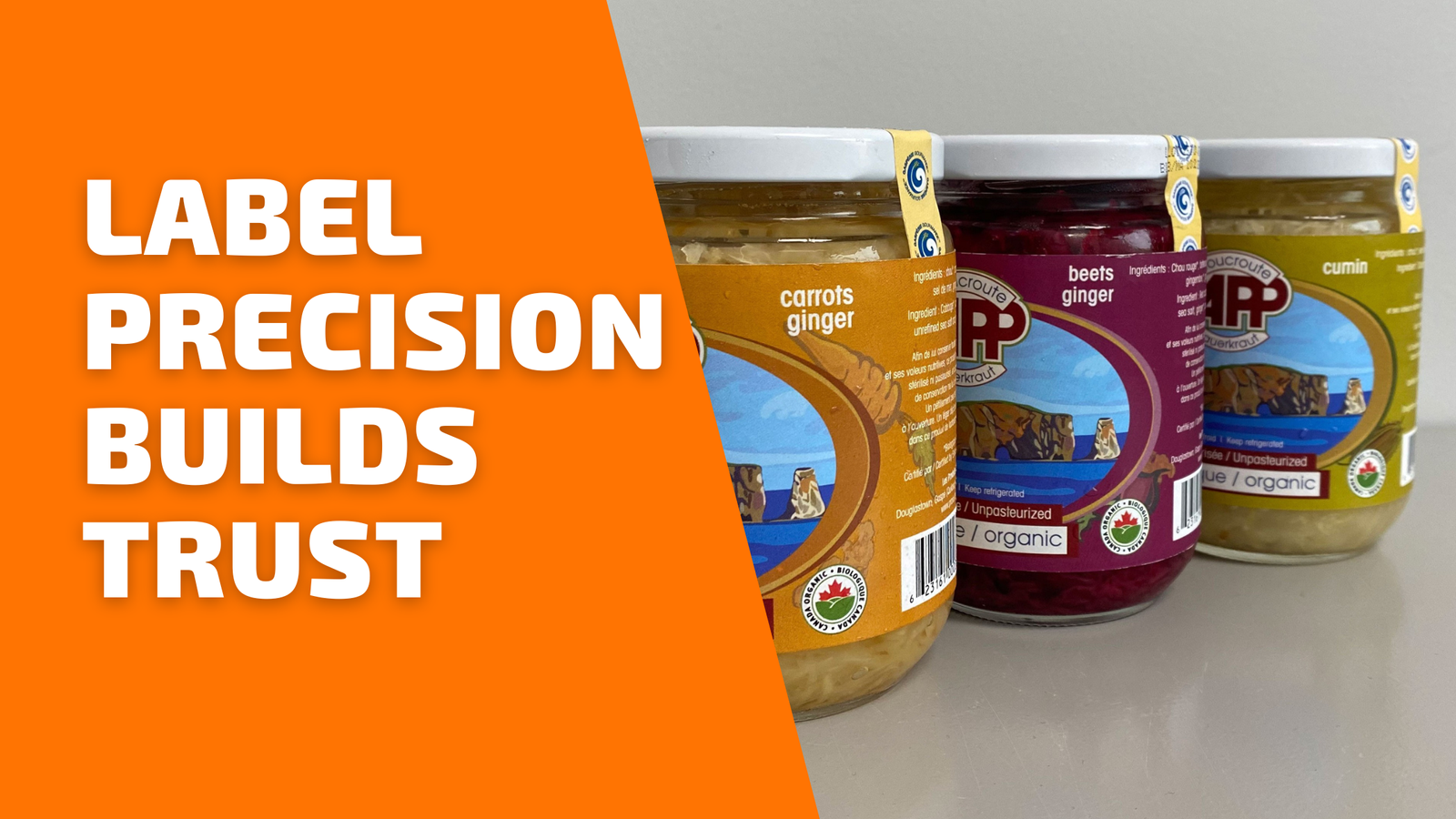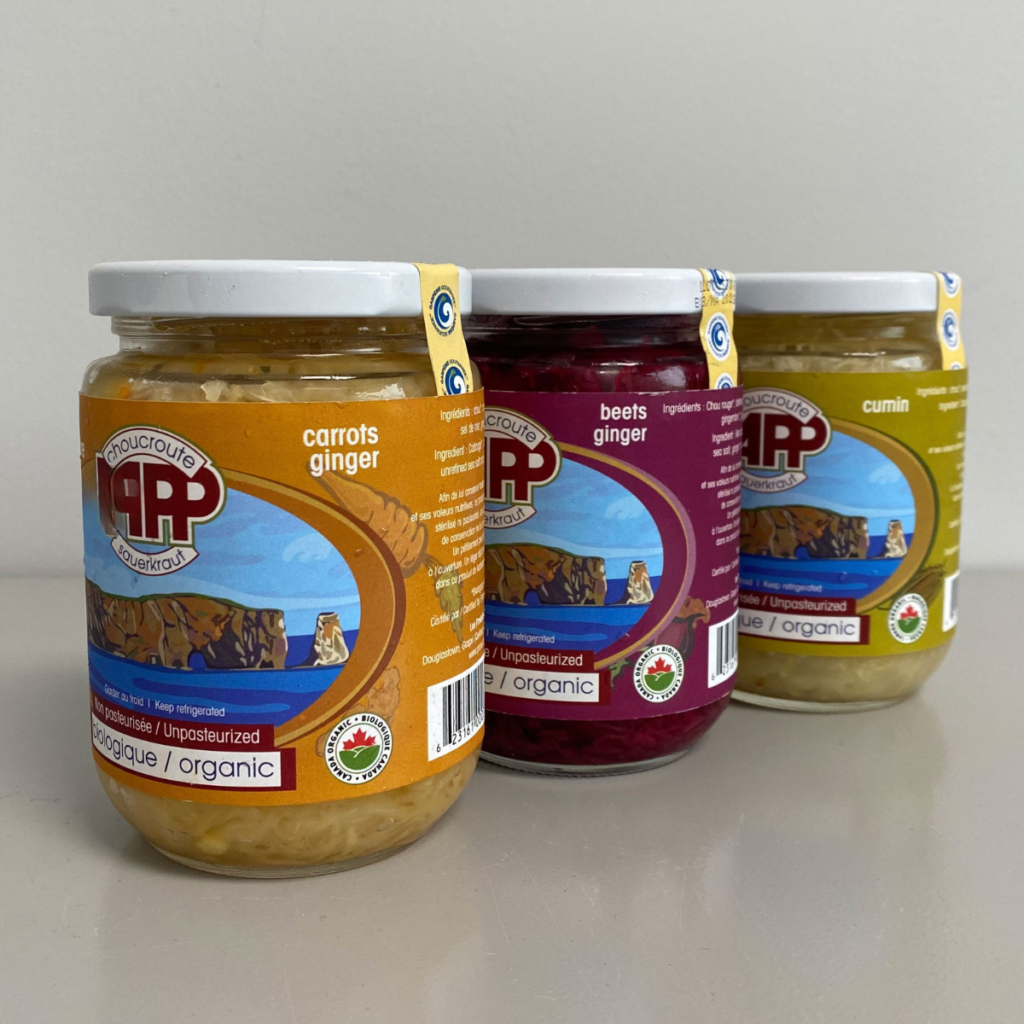
Why Label Application Quality Matters
Label Application Quality Affects Consumer Perception
When a consumer reaches for a snack pack, or any consumer product, much of their decision is subconscious. While they may consciously evaluate flavor, price or health claims, they also register how the package presents itself. A poorly aligned tamper-proof label, a bubble under the seal, or a crooked wrap doesn’t just look imperfect… it feels imperfect. In effect, the packaging communicates “care” or “lack of care”.
Research supports this. One study found that visual packaging elements such as typeface, colour, pattern and information level systematically influence perceived credibility:
“Visible seal/label imperfections, like crooked or poorly adhered tamper labels,are read as contamination cues, reducing perceived quality and willingness to pay, and they appear frequently in real consumer complaints about food packaging.” UCF
For food manufacturers using automated labelers, like linear labeling machines or rotary labelers for tamper-proof labelling are a tangible way to protect brand trust. In other words: the investment in packaging automation doesn’t just control cost or throughput, it protects perception.
The Subconscious Power of Packaging
In a grocery aisle filled with bright colors and creative designs, the first interaction a consumer has with a product isn’t through taste, smell, or even reading the label but rather it’s through the visual cues the packaging sends. A sleek, cleanly applied label communicates care and professionalism; a crooked, bubbled, or misaligned label subconsciously signals the opposite. Even when the food inside is perfect, these small visual imperfections can plant a seed of doubt. Consumers often can’t articulate why something feels “off,” but their purchasing behavior reflects it.
In food packaging, visual integrity equals trust. A tamper-proof seal that’s crooked can trigger hesitation, especially in ready-to-eat or refrigerated items where safety and hygiene matter most. This reaction isn’t superficial, it’s deeply rooted in how our brains associate precision with safety. When the seal looks slightly wrong, the consumer may assume the product has been mishandled or opened, even if it hasn’t. For brands competing in fast-moving categories like snacks, sauces, and grab-and-go meals, maintaining consistent label quality is a silent promise to consumers that their safety and satisfaction were handled with care.
Why Label Accuracy Protects More Than Aesthetics
Precision in label application goes beyond aesthetics; it’s a direct reflection of brand integrity and operational excellence. When labels are consistently well-placed and wrinkle-free, they tell the story of a company that values detail, consistency, and consumer safety. The opposite, whether due to manual handling, faulty calibration, or inadequate automation, can suggest production shortcuts or lack of quality control. Consumers may not consciously register the flaw, but they feel it, and that feeling can quietly erode brand loyalty.
Authenticity and transparency increasingly drive purchasing decisions, and brands can’t afford such silent trust killers. Food safety and traceability systems have evolved dramatically, yet a poorly applied label can undermine the credibility those systems aim to protect. When the external appearance feels unreliable, it casts doubt on everything else, from ingredient quality to supply chain integrity. In short, label accuracy is brand accuracy.
For manufacturers, especially in high-volume food production, consistent labeling isn’t just a function of marketing, it’s part of the product’s DNA. It’s the physical manifestation of process control, care, and reliability. Investing in technologies that guarantee that precision is as much about protecting brand equity as it is about keeping up with production demands.
Automation: The Guardian of Consistency
This is where automated labelers earn their reputation. By combining mechanical precision with smart vision systems, automation eliminates much of the human error that leads to crooked or bubbled labels. Servo-driven label applicators, for instance, synchronize perfectly with conveyor speeds, ensuring each label is placed with micrometric accuracy, even on irregularly shaped containers like fruit cups or squeezable pouches.
Advanced vision inspection systems further close the loop by checking every label for placement, wrinkles, alignment and presence of variable information before products leave the line. If an anomaly appears, the system can auto-reject the item maintaining flawless output without halting production. These systems not only protect visual quality but also create data trails, proof that every unit met defined quality parameters.
Automation also empowers brands to maintain quality across multiple SKUs. Recipe recall systems allow operators to switch product formats in seconds, with digital memory storing each label’s precise placement coordinates. The result is a smoother, more reliable operation that aligns with modern consumer expectations: clean packaging, perfect seals, and visual cues of trustworthiness. In an industry where margins are tight and shelf competition is fierce, automation isn’t a luxury; it’s a strategic investment in credibility.
Building Trust Through Detail and Technology
Ultimately, label precision is not about perfectionism but rather the message consistency sends. Every tamper-evident label that lies flat and centered reinforces an unspoken agreement: this product was made with care, checked for safety, and delivered to you exactly as intended. In contrast, when a consumer picks up a package with an off-center seal, they hesitate. That micro-moment of doubt can be the difference between a sale and a lost customer.
The most trusted food brands in the world build loyalty not only through great flavor or price but through visible reliability. Automated labeling systems give manufacturers the power to scale that reliability without compromising speed or efficiency. They bridge the gap between production performance and consumer psychology, between what the machine achieves and what the shopper perceives.
For food manufacturers striving to stand out in a saturated market, the takeaway is simple: trust is built in the details. Label application accuracy isn’t just a technical metric, it’s an emotional one. It’s what reassures a parent buying baby food, a commuter grabbing a snack, or a shopper choosing between two identical jars on the shelf. Automation gives manufacturers the control to ensure every package tells the same reassuring story: this brand cares enough to get it right, every time.




